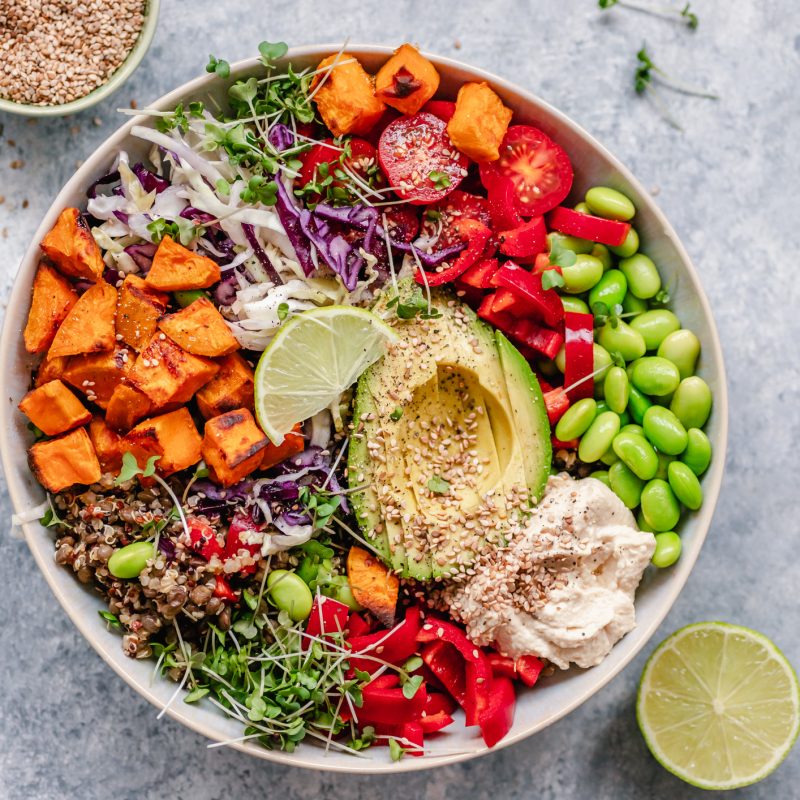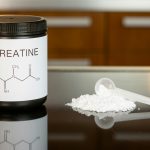
As media moguls continue to bombard the country with the health advantages of limiting red meat consumption, more and more individuals have taken a serious second look at the value of a plant-based style of eating. Here we delve into the top reasons for adapting to a whole food, plant-based way of life. You may discover previously unknown health and environmental aspects, as well as the multi-faceted ways in which individuals of all ages can embrace nature’s bounty … including elite athletes.
Reaping the Profits of Plant-Based Eating
Fitness professionals, dietitians and those in the medical community no doubt already extoll the virtues of cutting down red meat consumption as part of a healthier lifestyle. However, rather than just hearing about this trend, we can gain a tremendous amount of insight from one of the more unique historic research studies undertaken to review this important health topic.
In 1983, a project known as The China Study began as a collaborative effort between Cornell University, the Chinese Academy of Preventive Medicine, the Chinese Academy of Medical Sciences, and England’s Oxford University, as well as scientists from the United States, China, Britain, France, and other countries. The principal investigators sought to determine if the variety of dietary patterns found in different regions of China might correlate to death rates from certain diseases.
80 million Chinese individuals from 65 counties throughout China participated in this project, a statistically high number of subjects. Interestingly, death rates from specific diseases varied sometimes several hundredfold from county to county. Could this startling fact somehow correlate to unique dietary habits within certain locales?
Statistics Paint a Dramatic Pro-Plant Picture
As the scientists began collecting data, the results clearly supported the original hypothesis on many fronts. The very highest levels of cholesterol reported among individuals in more rural areas of China matched the lowest levels found among individuals in the United States. As expected, Chinese villagers who exhibited higher levels of cholesterol also experienced increased incidences of cancer, diabetes and cardiovascular disease.
Metabolic studies in humans have always tended to point towards animal protein as a major culprit of elevated blood cholesterol, much more so than saturated fats; this leads us to believe that even lean cuts of meat and/or skinless poultry may contribute to elevated overall cholesterol levels. Indeed, scientists found that even a small intake of animal products aligned statistically with significant increases in chronic degenerative diseases. Since death from heart disease among American men outpaces that experienced by males in China by a factor of 17, “…the Chinese experience shows that most Western coronary heart disease is unnecessary” concludes Dr. Richard Peto of Oxford University and a chief scientist involved in The China Study.
Excess Protein May Lead to Calcium Loss
In the United States, as well as other countries that comprise the Western world, pediatricians and parents – not to mention the dairy farmers – encourage consumption of calcium-dense foods as a way to strengthen developing bones. However, as we age, how much calcium do we truly need to stave off osteoporosis and thinning/brittle bones?
Scientists in the Eastern hemisphere challenge our dairy-related calcium beliefs. A typical Chinese diet contains very low amounts of calcium, and yet the Chinese present a significantly lower risk for osteoporosis than what we observe in this country. In fact, the number of hip fractures reported in The China Study equaled about 20% of the number of cases that surgeons diagnose in the United States. One promising hypothesis surrounds the relatively low amounts of animal protein consumed in that part of the world.
The body’s job of appropriating calcium entails quite a balancing act every day. A diet high in animal protein can actually cause the excretion of calcium through the urine in excess of what gets consumed. For example, a person consuming 142 grams of protein/day – sadly, not uncommon in this country – will excrete twice as much calcium in the urine as the person who consumes a more modest, healthier 50 grams/day. Such a deficit takes on a higher level of importance when we consider how many nerve and muscle processes rely on calcium for their regulation and function.
A human body stores 99% of its total calcium within its skeletal system. Therefore, when the body needs calcium to replace that which gets lost, often in excess, through the kidneys, it must draw from the skeletal structures, rendering the bones weaker, fragile and much more prone to breaks and fractures.
The “super-foods” of which dietitians speak — broccoli, kale, and turnip/collard greens, among others – can provide a good amount of calcium without the negative effects associated with high protein diets. One cup of broccoli contains 178 milligrams of calcium, and five dried figs deliver a double punch: high fiber and 135 milligrams of calcium. If we plan meals around a goal of consuming ~ 800 milligrams of calcium each day, fulfilling this quota through high-quality, plant-derived calcium sources starts to seem less daunting. Another often overlooked bonus: vegetables contain boron, a mineral that helps keep calcium in the bones, whereas milk does not offer any at all.
Cancer and the American Diet
According to the National Academy of Sciences, most cancer cases seen in this country can trace their origins at least in some aspect to our standard meal plan. Carcinogenesis – the process of developing cancer – can get “turned on” by animal protein and negated or at least slowed by plant protein. It appears that once the body receives all the protein it needs through consumption, any excess begins to “feed” precancerous lesions and tumors.
Experts say that no more than 8-10% of our total calories should come from protein sources.
However, studies indicate that number typically falls at about 11-22 % instead. The source of protein consumed as part of the American diet varies greatly from that consumed by other populations. In China, only 10% of total protein consumed comes from animals/meat protein, while in our country approximately 70% of protein consumed hails from meat and/or dairy products. This goes a long way toward explaining our higher rate of cancers as compared to the rest of the world.
Many Americans, in an attempt to improve their health, have in fact made conscious efforts to cut back on fatty meats, but have replaced them with lower -fat animal proteins such as white-meat poultry or low-fat milk. Sometimes this results in an overall increase in grams of protein! Adjusting our meal plans to revolve more around swaps of vegetables, grains, and fruits rather than just different animal sources may take a bit of forethought and planning, but the health benefits speak for themselves. Eating plant-based foods taken from different parts of the plant, such as roots, leaves, stems, flowers and seeds, can help ensure a wide variety of vitamins, minerals, antioxidants, and other phytochemicals.
No Need to Fear Protein Deficit
Medical and fitness professionals agree that diets extremely low in protein compromise our immune systems, making us susceptible to a multitude of infections. However, given the amount of protein “hidden” in plant-based food sources, the average vegetarian/vegan can easily consume a significant amount of complete protein. Most people do not think of breads and vegetables as foods that offer protein; but a slice of bread can contain 2 to 3 grams of healthy protein, as can a half cup of broccoli. We will cover this in more detail later on in this article.
The Whole -Food Approach to Eating
Contrary to popular belief, a “plant-based” meal plan does not require eating solely plants. In fact, nutrition experts do not have an official definition of the term “plant-based diet.” Such a style of eating simply includes mostly plant foods like fruits, vegetables and whole grains. One does not need to entirely eliminate meat/animal products in order to consider himself “plant-centric”. Completely cutting out all such foods could trigger deficiencies in nutrients like vitamin B12, calcium, vitamin D, omega-3s, iron and protein, which in turn may negatively affect blood flow, bone health and brain integrity. For this reason, especially if one strives to avoid foods such as beef, chicken and turkey, organic eggs not only fit into a plant-forward style of eating but serve an integral role nutritionally.
Whole-food eating means minimizing/eliminating foods that undergo heavy processing or refining prior to arriving at the grocery store. Unfortunately, some purely vegan/vegetarian meal plans can still contain highly processed imitation meats and cheeses. Whole-food plans support close-to-nature foods sources that simplify the goal of meeting nutritional needs.
Benefits of a Whole Food Plant-Based Diet
Scientists agree on several major benefits of moving to plant-based nutrition, including the following ~
- Easy weight management: Individuals who adopt a plant-forward diet find it easier to lose weight, keep it off, and maintain leaner physiques—without counting calories.
- Disease prevention: Whole-food, plant-based eating can prevent, halt, and in some cases reverse chronic diseases. The scientific evidence points overwhelmingly to heart disease and diabetes, but research also links plant-based diets to lower rates of arthritis, healthier kidney and liver functions and increased energy
Plant-Based Foods Help Control Diabetes
The World Health Organization determined that people with diabetes suffer from depression 2-3x more than those without this condition. To that end, researchers at the University of London, the University of Northampton, and the Department of Cardiology at East Sussex NHS Healthcare Trust reviewed 11 controlled studies on dietary interventions for diabetic subjects. They concluded that “plant-based diets were associated with significant improvements in emotional well-being, physical well-being, depression … general health, HbA1c levels, weight, total cholesterol, and low-density lipoprotein cholesterol, compared with several diabetic associations’ official guidelines.”
Lightening the Environmental Footprint
A plant-based diet places much less stress on the environment. Whole/minimally processed plant-based foods encompass some of the healthiest, most sustainable foods as well as some of the most affordable. According to research published in the Journal of Hunger & Environmental Nutrition, shifting to a more plant-centric mode of eating may help individuals reduce grocery costs by as much as $750 annually.
The term “nitrogen footprint” describes the environmental impact of a particular aspect of one’s dietary intake. In a 6-month-long study, 63 adult subjects followed one of five different meal plans: pesco-vegetarian (fish and plant-based foods only), semi-vegetarian, strictly vegetarian, vegan and omnivorous. After calculating the nitrogen footprint for each group, the scientists looked at changes in grocery expenditures as well as meals eaten away from home/workplace.
At the end of the 6-month study, they observed no discernible differences between meal plans except in the nitrogen footprint score; the vegan group displayed a significantly greater decrease in environmental impact than any of the other meal plans.
Plant-forward Meals for Athletes?
Many questions surround the topic of vegan/vegetarian/plant-based meal plans with regard to fitness enthusiasts, from recreational to elite/competitive athletes. Do performance benefits exist? Can such athletes safely meet their nutritional demands with this sort of diet?
The majority of professionals within the medical/dietitian/fitness community supports adherence to the well-balanced whole-food, plant-based eating approach. It can provide all of the nutrients an active body needs for training and competition, including sufficient carbohydrates to fuel workouts, ample protein to build muscle mass, and micronutrients in a great enough supply to support recovery.
Research indicates that endurance athletes may experience enhanced performance on a well-balanced plant-based diet. The high levels of vitamins, minerals and antioxidants, abundant in plant-centric meal plans, can foster improvements in recovery, training capacity, energy metabolism, and oxygenation of blood cells.
For those athletes whose interests/goals lie in strength training and bodybuilding, similar studies revealed no significant difference in muscle building and strength gains between plant-based and omnivorous meal plans, provided equivalent macronutrient availability.
Nutritional and Supplemental Guidelines for Vegan Athletes
The International Society of Sports Nutrition’s outline of protein needs for athletes remains fairly consistent across all varieties of meal plans:
- 1.2-1.4 grams/kilogram/day for endurance athletes
- 1.6-1.8 grams/kilogram/day for strength/power athletes
- 2+ grams/kilogram/day for bodybuilders
Vegetarian athletes may sometimes exhibit lower blood and muscle creatine concentrations compared to omnivores, due to their particular food choices. Athletes participating in resistance training and/or high-intensity exercise may therefore benefit from creatine supplementation.
One research study sought to compare changes in muscle creatine and exercise performance between vegetarians and nonvegetarians after an 8-week-long course of creatine supplementation coupled with resistance training.
Baseline biopsy samples indicated that total creatine values consistently came in lower for vegetarian compared with the omnivore subjects. Vegetarians who received creatine supplements showed a greater increase in lean muscle mass as well as total work performance than the non-vegetarians who also received creatine supplements. Scientists felt these findings confirmed an ergogenic effect of creatine during resistance training, further indicating that individuals with initially low levels of intramuscular creatine (namely the vegetarian subjects) demonstrated a pronounced response to supplementation.
However, like almost any athlete, vegan and vegetarian fitness enthusiasts may first want to consider educating themselves about which food choices can help them optimize health and peak performance before automatically tuning to supplementation. Those looking to add non-meat protein can choose from beans, nuts, seeds, and soy products including tofu, tempeh and soy-based milk/cheese/yogurt. Plant-based omega-3 fats found in nuts confer significant anti-inflammatory properties and, as mentioned earlier, may promote faster recovery in athletes who choose a plant-centric lifestyle. If necessary, these athletes may also consider an algae-based omega-3 supplementation.
Closing Remarks
The 2020–2025 Dietary Guidelines for Americans endorse what they refer to as a “Healthy Vegetarian Dietary Pattern” as one that individuals can easily tailor to meet personal preferences. Appropriate versions of this plan safely exist for individuals ages one year and older. In general, as we might expect, the Guidelines encourage all individuals, vegetarians and omnivores alike, to opt for the dietary inclusion of more plant-forward food choices like beans, whole grains, fruits, vegetables, and nuts.
Experts reviewed the abundance of scientific data on plant-based diets to summarize their preventative/therapeutic role in mitigating everything from cardiovascular disease, cancer and diabetes to obesity and osteoporosis. Plant-based diets, high in fiber and polyphenolics, align directly with fostering the all-important diverse gut microbiome, which may help manage disease processes.
It can take time to grow accustomed to a new way of eating as well as to embracing potentially different foods. According to some scientists, our “chemosensory sensitivity” towards particular foods may come into play as we attempt to shift our consumption away from animal proteins and more towards vegetarian sources. Our bodies, conditioned to the foods we have chosen up until now, may take a while to “reprogram” as we adjust to new tastes and palate sensations. We must try, however, to take the long view, knowing that every small step reflects an incremental but ultimately positive leap towards better health and increased vitality.
References:
https://pubmed.ncbi.nlm.nih.gov/2758659/
https://pubmed.ncbi.nlm.nih.gov/29465269/
https://pubmed.ncbi.nlm.nih.gov/14600563/
https://pubmed.ncbi.nlm.nih.gov/37596062/
https://pmc.ncbi.nlm.nih.gov/articles/PMC10097385/
https://pubmed.ncbi.nlm.nih.gov/25198208/
https://pmc.ncbi.nlm.nih.gov/articles/PMC8623061/
https://www.tandfonline.com/doi/abs/10.1080/19320248.2015.1066734
https://pubmed.ncbi.nlm.nih.gov/16873779/
https://fruitsandveggies.org/blog/can-eggs-fit-in-a-plant-based-diet/






